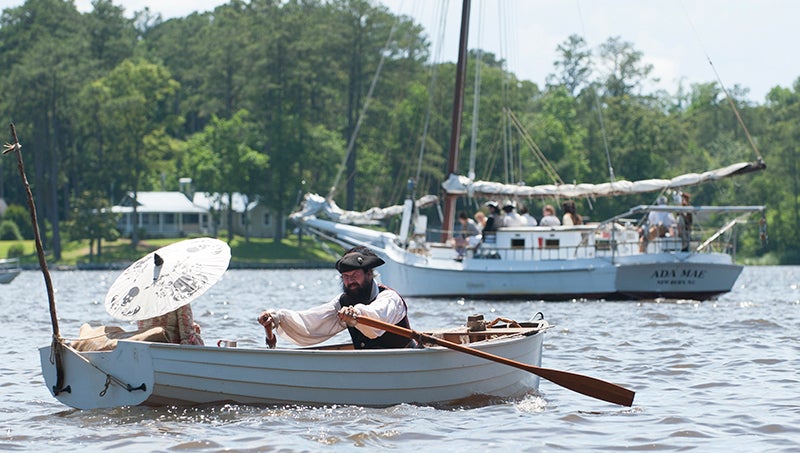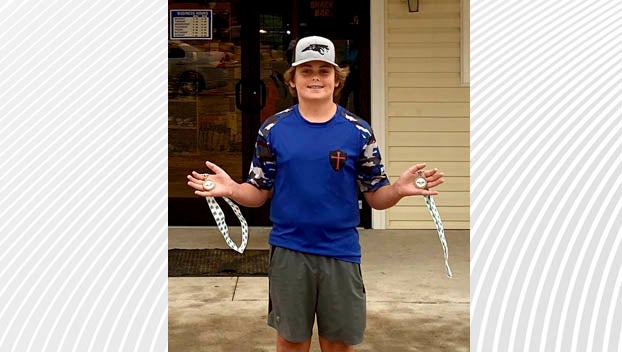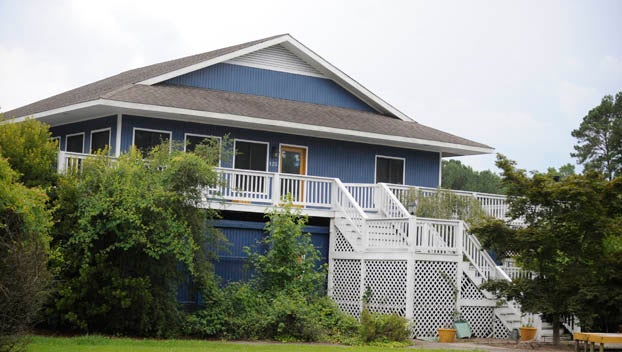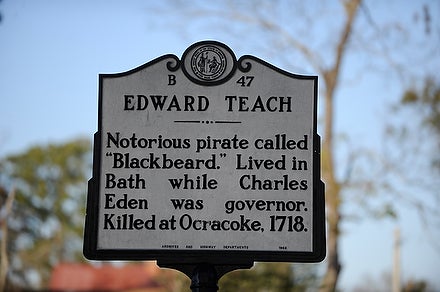Historian: Blackbeard’s death a result of unlawful act
Published 7:44 pm Friday, August 17, 2018

- (Vail Stewart Rumley)
OCRACOKE (AP) — An independent historian says his research shows the pirate Blackbeard’s death in North Carolina nearly 300 years ago took place after unlawful actions by an overzealous Virginia lieutenant governor.
The Virginian-Pilot reports Blackbeard could have received a pardon from the king of England, but Lt. Gov. Alexander Spotswood had Blackbeard hunted down first, according to Kevin Duffus.
Duffus describes himself as a North Carolina research historian, author and documentary filmmaker. His writings focus on the North Carolina coastal region, including the Cape Hatteras Lighthouse and shipwrecks in the Atlantic Ocean. The Associated Press was unable Thursday to reach other historians who study Edward Teach, better known as Blackbeard, for perspective on Duffus’ theory.
The 300th anniversary of Blackbeard’s death will be Nov. 22.
After combing through Royal Navy records and colonial documents, Duffus said he believes Spotswood sent Lt. Robert Maynard to North Carolina to capture or kill the pirate to boost his own political standing. Spotswood lacked the authority to send the Royal Navy to an inland waterway in North Carolina or interfere a neighboring colony’s affairs “without invitation,” Duffus said. Evidence indicated that North Carolina Gov. Charles Eden was collaborating with Blackbeard.
In 1718, colonial leaders fed up with attacks sought to rid the waters of pirates and Blackbeard was one of dozens of pirates killed or hanged that summer and fall. Benjamin Hornigold, Blackbeard’s mentor, accepted the King’s pardon and became a trusted enforcer for Woodes Rogers, the first royal governor of the Bahamas, said Kim Kenyon, a conservator with the Queen Anne’s Revenge Project. Rogers captured and hanged 10 pirates in a matter of months.
The estimated 2,000 pirates operating off the southeastern coast and the Bahamas were reduced to 200 by 1726, she said. Most simply quit, but others got pardons.
King George I pardoned pirates in 1717 and offered rewards to crew members who turned in captains, according to an account by the Queen Anne’s Revenge project. He planned another pardon in December 1718. Spotswood and other officials knew of the approaching second pardon, but he pursued Blackbeard before it arrived, Duffus said.
After hearing Blackbeard had run aground, Maynard came down the Pamlico Sound. Blackbeard escaped and was anchored off Ocracoke Island, the primary access point from the Atlantic Ocean to the sound and inland towns. But Duffus said Blackbeard was not there to attack ships as is commonly believed.
“He never pirated a single ship passing by Ocracoke,” he said.
Maynard approached with no flags, no guns showing and no uniforms on his 60 men, making Blackbeard believe the vessels were merchant ships. But Maynard suddenly turned left toward the pirates, and likely raised his flag.
In records, witnesses recall Blackboard calling out: “If you do not meddle with us we will not meddle with you.”
“You can see by our colors, we are not pirates,” Maynard said. “It’s you we want and we will take you dead or alive.”
Blackbeard could surrender and hope Spotswood would not execute him before the expected pardon, or fight.
He fired on the approaching ships, killing sailors, damaging the Ranger. Maynard’s ships ran aground, but released ballast to get afloat again, according to an account by the state Department of Cultural Resources.
To trick Blackbeard into close battle, Maynard on the Jane sent his men below deck and Blackbeard boarded, thinking he had killed most of the crew. Ten pirates were killed in just six minutes, including Blackbeard.
Blackbeard was shot five times and struck with a sword several times, including one blow that nearly severed his head. Maynard finished the job.





